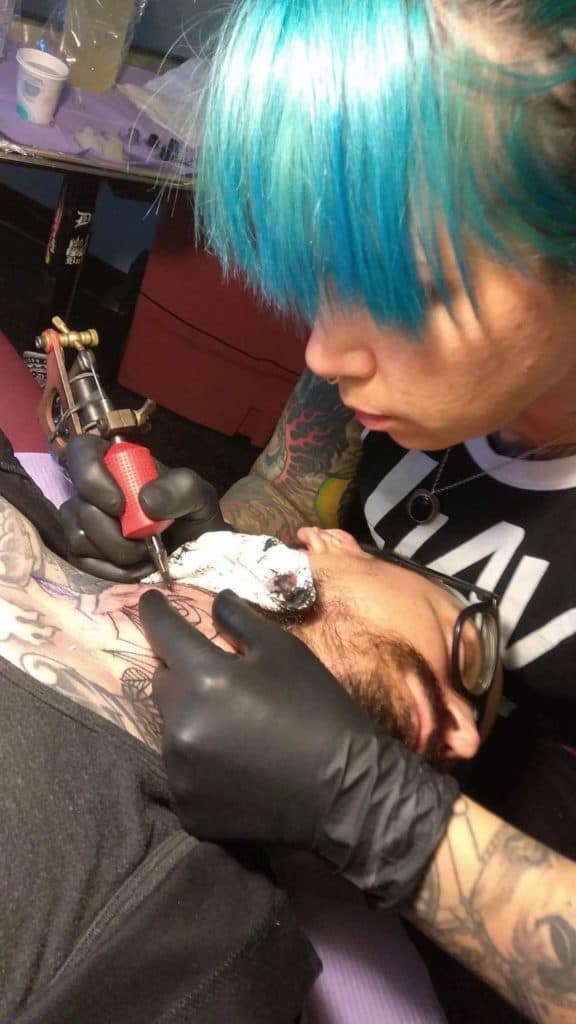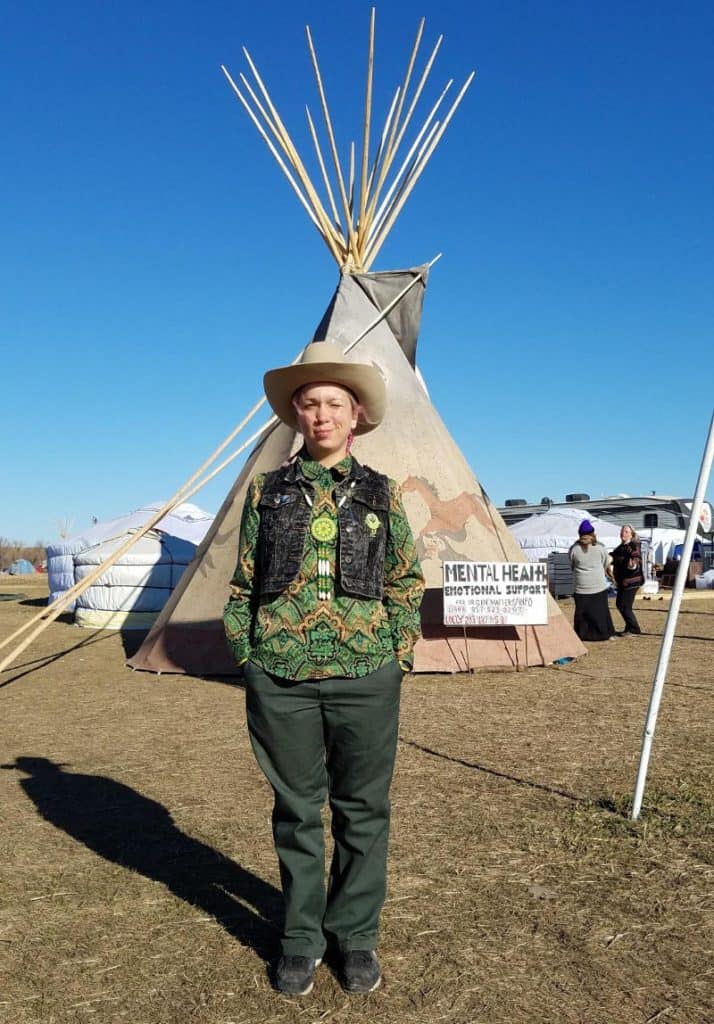Good People Smoke Marijuana: Meet Shelly Wahweotten
I know he said it more than a year ago, but I just can’t let it go. The fact that the attorney general of the United States, Jeff Sessions—the chief law enforcement officer for the country—suggested that cannabis consumers are “bad people,” is beyond infuriating. And it’s simply not true.
Maya Angelou consumed cannabis. Was she a bad person?
Angelina Jolie—the famous actor who’s donated her time, celebrity status and millions of dollars to help refugees in war-torn countries consumes cannabis—is she a bad person?
Recent studies of scriptural texts have even indicated that Jesus was almost certainly a cannabis user. In fact, the anointing oil used by Jesus and his disciples apparently contained kaneh-bosm, which is a cannabis extract.
Would Jeff Sessions—a Christian—suggest that Jesus was a bad person?
Of course, these are all pretty famous people. But you don’t have to be famous to be a good person, nor do you have to be famous to be a good person who consumes cannabis.
While it’s important to dispel the myths of prohibitionists like Jeff Sessions by pointing to easily-verifiable evidence of good people consuming cannabis, it’s also important for us, as cannabis consumers and legalization advocates, to recognize other good people who use cannabis, but aren’t likely to be featured in the Bible or on TMZ.
And that’s why I’ve decided to start a new series of posts where I’ll interview folks who are not A-list celebrities or messiahs, but are “good people “ who also consume cannabis or support the legalization of cannabis.
Meet Shelly Wahweotten
I’m not sure if Jeff Sessions would ever have tattoo artist Shelly Wahweotten over for a dinner of milk and Melba toast, but rest assured, Wahweotten is a good person who not only supports the legalization of cannabis, but has also worked passionately to protect the environment and the rights of Native Americans.
And today, I’d like to introduce you to her.
HIGH TIMES: Most people know you because of your work as a tattoo artist. What got you interested in tattooing?
Shelly Wahweotten: I was exposed to art and a low-brow culture at an early age. My father was a skilled, self-taught artist himself, my mother in craft areas. Tattooing came naturally, growing up in public schools and a middle to lower social class.
HT: What are some of the most memorable tattoos you’ve done for people?
SW: Sometimes it can be hard to remember everything, being that I stay fairly busy in the trade. It’s sometimes like remembering what meals I had during the last week. Ha! I’ve done tattoos for people that start out as the smallest butterfly or flower, representing family members, then becoming good friends with them over the years and covering their entire backs, arms, chest, neck and hardly being able to pick out the very first flower they started with over a decade ago.
Most of my memorable moments come from the experience with the person though, more so than the piece of art itself. It’s a very intimate experience that we share over a moment’s time that they carry with them for the rest of their lives. I carry the experience more so than the art.

HT: I find some of your work to be really intricate, particularly the pieces you’ve done with some kind of connection to nature. Some of the animals and flowers have a sort of softness to them, while maintaining a very powerful image. Is this something you’ve done intentionally, or is this just something that comes out in your work, naturally?
SW: Everything comes out differently. Sometimes it has to do with the requests of the person getting tattooed, sometimes it has to do with their budget, sometimes it just appears differently in the perspective of the viewer.
HT: You are Native American, so would it be safe to say that you have a certain intrinsic connection to nature that perhaps other artists might not have?
SW: I’m sure I do, generally speaking. I think that may also be a view of perception. I’ve been raised in outdoor lifestyles, as well as a normal “city” life. I do notice that when I get requests for Native style designs, I become more inquisitive about the origins and the meaning to the person. I’ve asked what tribes or regions where certain designs come from, in order to make them correct to their heritage (if any), and also so I feel more solid on the art. Some people get it just because it’s popular. Some get it because it represents the people they come from. But most good artists do their research, too.
HT: Last year, you made the trek to South Dakota to join the Keystone pipeline protests. A lot of folks supported the movement on social media, but you actually went to ground zero and took part in the protests. What was that like?
SW: The short amount of time I was there was nowhere near enough time to make the impact I wanted, in my opinion. There were people there for months, and more forcefully involved than my road dogs and I were. Mainly, I feel I provided added awareness and support. More than anything, we provided more clothing and money to the people who were out there fighting. Other members of my family went at different times, too, and did the same—bringing more supplies and money.
Alongside being as equally terrifying and beautiful, those protests connected our cultures the way they were before this known civilization. It’s definitely a way of life that I could be much happier living in, being as anti-everything as I already am. Since I was a kid, I’ve done things against the grain of society. Some of those things have caught up with me, with consequences, and some are coming more to light as “the right thing to do.” All in all, I’m 100 percent for decolonization, but I feel I’m a good person, doing good for the land, not trying to abusively capitalize on resources and others. I’m here to build and give; not destroy and take.

HT: Did that experience affect or inspire you as an artist?
SW: It definitely has. Although I’ve spent most of my adult life trying to build an artistic career, now I feel like it’s more of a trade than a superior/individual lifestyle. In a lot of ways, what we do for a living is a very primitive art form. It’s helped in ways of forming cultures of today, making things more widely accepted, beautifying individuality as well as helping individuals feel more confident in themselves, physically and spiritually. A lot of the teachings Native culture provided in life, comes out in those ways, sometimes more subtly.
HT: What does inspire you as an artist?
SW: People. Definitely people. Their struggles, their cultures, origins, backgrounds, aspirations, dreams, desires. It’s a give and take though. Some days, I wish I could have them drop off their limbs, and I ship them back, but all in all, it’s what makes me strive. I think every art form is like that though.
HT: You were tattooing this summer at the Michigan Cannabis Cup. Are you an advocate of legalization?
SW: Indeed, I am. There was a lot of information available about the benefits of hemp while I was growing up, leading into the medicinal information. Now that more organizations are providing this information from reputable sources, more of our society is listening and paying attention. It seems the ones that aren’t paying attention are those who choose to live under rocks, arguing that marijuana is a harmful drug while drinking three sodas in one sitting and taking prescription drugs for multiple health problems. It just blows my mind that they don’t see the difference. Also, given the economic benefits of legalization, we as a country could use the help.
You can check out some of Shelly’s work here. And if you’re interested in learning more about Shelly’s support for those who fight to protect Native American rights, click here.
The post Good People Smoke Marijuana: Meet Shelly Wahweotten appeared first on High Times.


